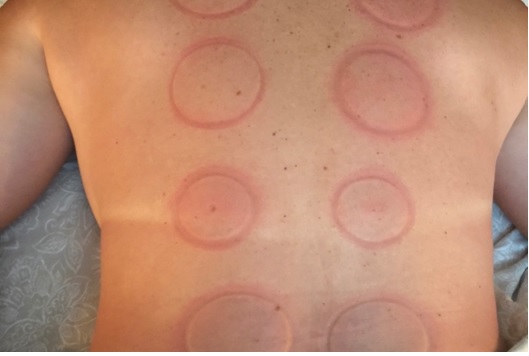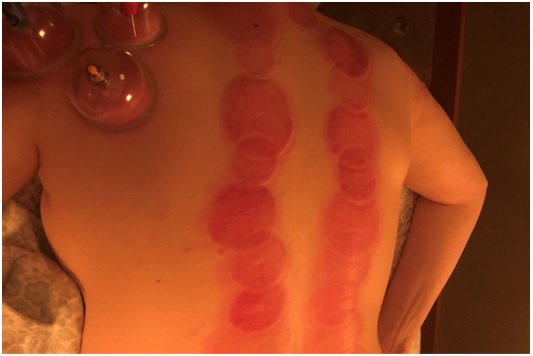Past Issues
Revisiting Rubefacient in Reducing Pain and Inflammation in Rheumatoid Arthritis through Clinical Aromatherapy Perspective — an Exploratory Study
FAI CHAN
DELI AROMA LLC, 168 World of Tennis Sq., Lakeway, TX 78738, USA
Corresponding author: FAI CHAN, DELI AROMA LLC, 168 World of Tennis Sq., Lakeway, TX 78738, USA, Tel: +(512)-902 1111; E-mail: [email protected] Received Date: October 25, 2020 Published Date : November 18, 2020
ABSTRACT
Rheumatoid arthritis (RA) is a disease that is known to cause pain and inflammation. So far there is little research data regarding the treatment of RA using aromatherapy. The author attempts an aromatherapy-based approach to reduce pain and inflammation of RA patients. The implementation is a novel rubefacient procedure involving scraping, cupping, the application of specific essential oils such as rosemary oil and lavender oil, and the application of rosemary hydrosol. All of the subjects have reported a reduction in pain within days of the procedure.
KEYWORD: Rheumatoid Arthritis; Aromatherapy; Rubefacient
INTRODUCTION
Rheumatoid arthritis (RA) is a disease with no known cure. Patients of RA can suffer years of pain and inflammation. So far no known treatment provides a low cost and effective solution to the problem of pain and inflammation. The author attempted to solve this problem through a clinical aromatherapy approach by employing a rubefacient procedure. The author applied this procedure to three subjects. The author also advised those subjects to maintain a proper diet and exercise to maximize the effect of the procedure.
This is an exploratory study. There is no literature found regarding the protocols used in a clinical aromatherapy setting. The author formulated the procedure based on her personal experience in treating patients with RA.
DEFINITION
According to the CDC, rheumatoid arthritis (RA) is an autoimmune and inflammatory disease in which one’s immune system attacks healthy cells in his body and causing inflammation of the affected area [1].
Rubefacient, according to Merriam-Webster dictionary, is a substance for external application that produces redness of the skin [2]. In this research, the substance used is not limited to medicine or herbs. Examples of rubefacient include scraping, massage (especially kneading), cupping, ingestion, and sauna. The purpose of rubefacient is to flush away toxins and wastes and to increase the absorption of essential oil blend(s).
MATERIALS AND METHODS
The rubefacient procedure is as follows
- To test the response of the subject’s body in terms of redness through scraping or cupping and the potency of the applied essential oil blend, massage stroke, especially kneading technique, is employed. After redness appeared, wait 2-3 minutes to see how long it takes for the redness to go away. The purpose is to see how fast the subject’s body recovers.
- After body testing, apply a thin layer of an essential oil blend on the back and neck. This blend consists of a combination of Rosmarinus officinalis ‘Herb Cottage’ (chemotype alpha-pinene) and Lavandula x Intermedia ‘Grosso’ diluted in carrier oil (jojoba oil).
- After the application of oil, scraping (Gua Sha) will be employed. This is to create a mild redness on the back, shoulder, and neck.
- Next, a hydrosol, also Rosmarinus officinalis ‘Herb Cottage’ (chemotype alpha-pinene),is sprayed on that area. This is to calm the redness and make it less inflammatory in preparation for cupping.
- Wait for the sprayto dry. If the skin is too oily or too watery, cupping may not stick.
- Apply cupping.
- Apply the oil blend mentioned in step # 2 and lightly massage it until it dries.
Notes on Materials and Methods
The author observed that, while her RA patients experienced pain in lower limbs, they also experienced pain and stiffness in the neck and shoulders area. She would attempt to relieve the pain and stiffness in that area by improving the blood circulation of her patient’s body – starting from the back. Rubefacient was a simple method to improve blood circulation (Figure 1).
Figure 1: The first subject’s skin condition after cupping done
The author chose Rosmarinus officinalis and Lavandula x Intermedia ‘Grosso’ (distilled in Stonerise Farm) for their anti-inflammatory and analgesic responses. In particular, she found those two oils to be more potent than the rosemary and lavandin oils distilled elsewhere.
RESULTS
In figure 1, the cupping leaves pinkish marks. This figure implies that the whole protocol worked very well on this subject. This subject’s body recovery was very satisfactory. On the first day after the treatment, this subject reported a rough feeling for one day. Afterward, this subject reported less pain. On her first visit, scraping was the core of the treatment.
On this subject’s second visit, the author applied cupping for 3-4 minutes along both sides of her spine, around her scapula, and on her shoulders. This time, this subject did not experience any rough feeling. Afterward, the subject took an anti-cyclic citrullinated peptide (anti-CCP) test. The test result was negative, indicating the absence of RA. The subject’s family doctor confirmed the test result.
In figure 2, this subject had a more inflamed body than the first subject. The author made this conclusion based on the observation that, after 2-3 minutes of cupping, this subject’s body was bright to dark red. The subject’s cupping areas were on both sides of the spine, scapulae, shoulders, and neck. This subject reported experiencing four days free of pain after the treatment. On a side note, this subject has a family history of rheumatoid arthritis for generations.
Figure 2: Cupping on the second subject. This subject had a more inflamed body than the first one.
The third subject had been experiencing Rheumatoid Arthritis for over 20 years. She had several surgeries, and her fingers were deformed. For this subject, the author only applied Gua Sha (scraping). Foot massage was also used before the treatment to enhance the result.
The next day after the treatment, the swelling on this subject’s face and body had reduced to the point that, even at the age of 60, she could jump freely and easily. She looked more energetic and emotionally uplifted. Her pain began to subside.
THE ROLE OF SELF-CARE
Self-care plays a significant role in maintaining the treatment result. All three subjects were very conscious of diet and exercise. They took celery juice, omega 3, and turmeric. They swam, did fitness, and practiced yin yoga. The third subject was taking chemotherapy pills as prescribed by her rheumatologist. Taking the pills caused eczema in her mouth area. The author suggested taking vitamin B. This subject took the suggestion, and her eczema went away in three days.
CONCLUSION
Rubefacient, when properly applied, improves detoxication and activates body energetics. It also enhances the absorption of essential oil blends or hydrosols in healing and anti-inflammatory therapeutics. Incorporating a good self-care regime can further improve results in pain and inflammation management of RA.
This exploratory research aims to point the way to improve the life quality of the subjects. By combining clinical aromatherapy, traditional Chinese medicine and pharmacology, and massage therapy, this research gives hope to those suffering from RA. More research would clarify the safety and effectiveness of this technique and thus increase the public’s acceptance of this technique.
REFERENCES
- Center for Disease and Control and Prevention. (2020). Arthritis. Retrieved from: https://www.cdc.gov/arthritis/basics/rheumatoid-arthritis.html#:~:text=Rheumatoid%20arthritis%2C%20or%20RA%2C%20is%20an%20autoimmune%20and,attacks%20the%20joints%2C%20usually%20many%20joints%20at%20once.
- Merriam-Webster Dictionary. Rubefacient, Retrieved from: https://www.merriam-webster.com/dictionary/rubefacient.
Copyright: Chan F. ©2020. This is an open-access article distributed under the terms of the Creative Commons Attribution License, which permits unrestricted use, distribution, and reproduction in any medium, provided the original author and source are credited.
Citation: Chan F. (2020). Revisiting Rubefacient in Reducing Pain and Inflammation in Rheumatoid Arthritis through Clinical Aromatherapy Perspective — an Exploratory Study. Traditional Medicine 1(1):03.
 Abstract
Abstract  PDF
PDF
